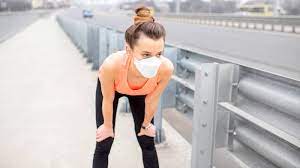Low temperatures tend to change the routine of exercisers and raise doubts about whether or not to do outdoor activities during the winter. Doctor Mauricio Milani, a specialist in exercise physiology and sports medicine, explains what is the best way to keep the pace in the milder weather.
About low temperatures
“The cold cannot be an excuse. Even worse is the sedentary lifestyle, which poses great health risks”, emphasizes Milani, who is also a triathlete. “In countries with much lower temperatures, people continue to exercise normally.”
The difference when doing physical activity in the cold is in the details, such as clothing, warm-up and stretching.
“The first thing to do is to dress warmly. Afterwards, be very careful with stretching and warming up. At low temperatures, the tendons and musculature are more rigid, so it requires a little more careful stretching. And it’s worth remembering that stretching doesn’t warm the body. As it is colder, the practitioner of physical activity should warm up longer, at a less intense pace. If you’re going to run, for example, start with a walk first, then pick up your pace a little. Only when the body is really warm, when the blood flow increases, start running”, explains Milani.
For those who practice water sports, it is also worth paying attention to the thermal shock when leaving the water. “A lot of people swim in heated pools, so it’s good to be careful about the temperature variation. Being warmly wrapped up after the activity is essential”, points out Milani.
Another very common question in the cold season concerns changes in the body, such as blood pressure, for example. Milani, who is also a specialist in cardiovascular rehabilitation, gives the details: “The cold does increase the closing of the arteries, but the issue of increased pressure depends on a number of factors. If the person does not have vascular problems, such as hypertension, the changes from exercising in the cold are not significant. If the change in pressure is not normal, it could be a matter of a pre-existing problem that was still in an asymptomatic phase and that the person had not noticed.”


